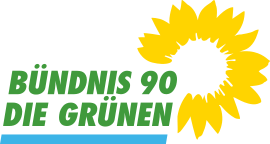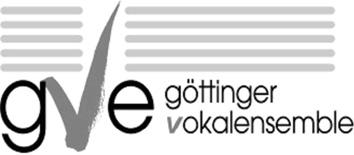 Ich bin Vorsitzender des Allgemeinen Fakultätentags.
Ich bin Vorsitzender des Allgemeinen Fakultätentags. Ich bin Mitglied bei den Grünen.
Ich bin Mitglied bei den Grünen. Ich singe im Göttinger Vokalensemble.
Ich singe im Göttinger Vokalensemble.



Im Wintersemester 2025/6 biete ich die Vorlesung Mathematik für Studierende der Physik 1 und ein Seminar zur Mathematischen Modellierung für Studierende im Master of Education Mathematik an.
In addition to these two courses, I will offer the Research Seminar Noncommutative Geometry as in previous semesters, and I will offer the Reading Course Category theory in context, meaning that students may take an oral exam on this course, but there will be no actual lectures, you have to work with the materials provided through the link.
My main area of research is noncommutative geometry, a generalisation of our idea of what space and geometry are. This theory is inspired by quantum mechanics. The Heisenberg commutation relation predicts that the position and momentum observables in quantum mechanics form a noncommutative algebra. This noncommutative algebra describes the phase space of a quantum mechanical system. Thus some noncommutative algebras seem to describe geometric objects. Which geometric ideas carry over to such spaces, and how?
Algebraic topology provides many tools to distinguish different spaces by some homological invariants. Most of these invariants do not carry over to noncommutative spaces. The main invariant in that setting is K-theory, which for ordinary spaces classifies the vector bundles over a space. In noncommutative geometry, K-theory is part of a bivariant theory, which provides powerful tools for computation of K-theory and a rich categorical structure. One important aspect of my work is extra structure in bivariant K-theory and how to use it, among others, for the classification of C*-algebras.
Another important homological class of invariant for noncommutative algebras are cyclic cohomology theories. Periodic cyclic cohomology generalises the de Rham homology of smooth manifolds, but only makes sense for algebras that behave like smooth functions. Variants of it like analytic and local cyclic cohomology also give good results for larger algebras like C*-algebras, which behave more like continuous functions. The original periodic cyclic cohomology is computable through its relationship to Hochschild cohomology. One important aspect of my work has been to extend various tools of homological algebra to algebras that carry some functional analytic structure, such as algebras of smooth or holomorphic functions and their noncommutative analogues. I found that bornologies are better behaved than topologies when functional analysis meets algebra. In particular, we may want to compare the homological algebra for two different algebras that describe the same noncommutative space with more or less extra structure. One may be an algebra of polynomial functions, the other an algebra of smooth functions on that noncommutative space. We would expect the homological algebra for these to be related, and my notion of an isocohomological embedding gives one way to make precise how.
Ordinary symmetries of spaces are usually described through group actions. Local symmetries may lead to groupoid actions. In noncommutative geometry, however, the more general notion of space should also lead to drastically different types of geometry. One Ansatz to describe noncommutative symmetries are quantum groups, which are noncommutative C*-algebras with extra structure that resembles that in a group. I found that higher category theory provides useful notions of symmetry for the study of C*-algebras. Several constructions in the study of C*-algebras become very clear if we treat C*-algebras as a bicategory with C*-correspondences as arrows and isomorphisms of correspondences as 2-arrows.
For instance, the noncommutative torus may be thought of as the algebra of functions on the quotient of the circle group by a dense subgroup. This quotient is a rather badly behaved non-Hausdorff space, which is replaced in noncommutative geometry first by a groupoid and then by its groupoid C*-algebra. The group structure on this quotient does not correspond to a quantum group structure on noncommutative tori. The philosophy of noncommutative geometry suggests to replace a non-Hausdorff quotient group by a bigroup or crossed module. There is indeed an action of this crossed module on the noncommutative torus that describes the translation action of the underlying non-Hausdorff quotient group on itself.
Besides providing more general notions of symmetry, bicategories also allow clarify the role of Fell bundles: a saturated Fell bundle over a group or groupoid is equivalent to an action by equivalences. For non-invertible dynamics, we also get a common treatment for crossed products and Cuntz-Pimsner algebras. An action of a monoid by C*-correspondences on a C*-algebra is equivalent to a product system over that monoid. If the product system is proper, then the Cuntz-Pimsner algebra of this product system is characterised by a universal property that is analogous to that of crossed products. This universal property is a bicategorical analogue of the definition of a limit or colimit.
Such limit constructions make sense also in suitable bicategories of rings and groupoids, as opposed to C*-algebras. Ongoing work by my students and me interprets various constructions of rings and groupoids as such bicategorical limits.
My research seminar (Oberseminar Nichtkommutative Geometrie) mostly has talks by my doctoral and master students about their ongoing work, or articles that they are reading. Sometimes, the seminar follows a programme to learn about a certain topic.
If you are a student at Göttingen University and intend to take one of the courses from the past for credit, please write me an email about the possibility of a reading course.
If you study in Göttingen and think about writing a Bachelor's or Master's thesis under my guidance, please write me an email to make an appointment. Then we would see whether there is a topic that suits us both. Even a Bachelor's thesis should ideally give you some research experience. I now list a few examples that may give you an idea what kind of work students have done with me in the past.
Classifying spaces for quasi-topological groups (2025).
This thesis studies carries the basic results about classifying spaces of groups over to the more general setting of quasi-topological groups and numerable principal bundles over quasi-topological spaces.
Examples of covariance rings (2022).
This thesis studies a construction of rings from generalised dynamical systems that is inspired by crossed products for group actions and Cuntz–Pimsner algebras for C*-correspondences. It shows that purely algebraic analogues of them such as twisted group rings and Leavitt path algebras fit into this language, and examines to what extent partial and twisted partial actions of groups on rings may be covered as well.
Convolution of measures on locally compact groupoids (2021).
This thesis explores a possible generalisation of the Haar system on a locally compact groupoid where invariant measures are replaced by quasi-invariant measures. The somewhat surprising outcome is that if such a generalised Haar system exists, then there must be a Haar system in the usual sense.
Epidemienmodellierung mit Differenzengleichungen (2021).
This thesis grew out of a seminar for students in the Master of Education about mathematical modelling of the Covid pandemic. It studies difference equations that are analogous to the differential equations that are used in the literature. These difference equations are much more accessible for school children.
Continuity of joint spectra (2021).
This thesis studies the continuity of spectral for families of operators on Hilbert spaces. The starting point is the dissertation of S.~Beckus, who showed that for bounded normal operators, the spectra vary continuously if and only if the operators form the sections of a continuous field of C*-algebras. This is extended to several commuting normal operators. The unbounded case is also explored, but the results are more messy in that case.
Classifying spaces over topological groupoids (2021).
This thesis studies the classifying space of a topological groupoid, with an emphasis on imposing no normality or Hausdorffness assumptions on the groupoids and spaces. Instead of restricting to paracompact spaces, it restricts to numerable covers in the definition of a topological groupoid and a principal bundle.
On the K-theory and KK-theory of Cuntz-Pimsner algebras (2020).
This thesis studied Pimsner's proof that the Toeplitz C*-algebra of a C*-correspondence is KK-equivalent to the underlying C*-algebra of the C*-correspondence. This proof is rewritten using quasi-homomorphisms instead of KK-theory.
Exakte Moduln über dem von Manuel Köhler beschriebenen Ring (2018).
This thesis studies modules over a certain rather complicated
ring that occurs in the classification of group actions on
certain C*-algebras. The Bachelor's thesis helped me to write
the
article
Groupoid models for diagrams of twisted groupoids (2025).
This master's thesis adds twists and Fell bundles to the bicategory of groupoid correspondences. It shows that there the construction of section C*-algebras of Fell bundles is part of a homomorphism of bicategories. Given a diagram of Ore shape of proper groupoid correspondences with Fell bundles over them, it builds a Fell bundle over the groupoid model of the diagram and shows that it has an analogue of the universal property that characterises the groupoid model.
Towards Hochschild and cyclic homology of dagger algebras (2024).
This master's thesis brings together noncommutative differential geometry in the form of cyclic homology and algebraic geometry. The main results compute the Hochschild, cyclic and periodic cyclic homology for crossed product algebras of finite groups acting on dagger algebras over nonarchimedean fields. A dagger algebra is a completion of a commutative algebra, where the completion is defined using bornologies. The first step is to prove that some results about crossed products remain true for algebras over all fields of characteristic 0. In particular, it is irrelevant whether or not the ground field is algebraically closed. While this is already claimed in the literature, the proofs are not always carried out in the more general situation. The second step treats the relevant bornological completions and argues why certain results for dagger algebras apply also to crossed product situations.
A bicategorical perspective on Steinberg algebras (2024).
This master's thesis lifts several results known for groupoid C*-algebras to the level of purely algebraic analogues called Steinberg algebras. First, it is shown that the Steinberg algebra construction is part of a homomorphism of bicategories from a bicategory of ample groupoids to the bicategory of rings. Secondly, for those diagrams where the shape category is an Ore monoid and the bimodules in the diagram are finitely generated and projective as right modules, the covariance ring is described concretely using inductive limits and endomorphism rings of right modules. Third, for a diagram of tight groupoid correspondences, it is shown that the covariance ring is the Steinberg algebra of the groupoid model of the diagram.
Operator algebras for Hamiltonians with mobility gaps (2024).
This thesis explored a possibility to classify topological phases in the presence of Anderson localization. Here the Fermi energy does not lie in a spectral gap, so that the projections defined by the functional calculus do not belong to a nice observable C*-algebra. Even worse, to make certain homotopies continuous, one must use a topological algebra that contains also certain unbounded operators. This thesis identified that algebra and studied some of its K-theoretic properties, both in Bellissard-like models and in models that use the Roe C*-algebra to model disorder.
Ideal structure of Nica–Toeplitz algebras (2023).
This thesis describes the gauge-invariant ideals in the Nica–Toeplitz algebra of a proper product system over a free commutative monoid. It led to a journal publication.
Nicolai Stammeier has studied a class of C*-algebras, which are associated to irreversible algebraic dynamical sytems. This thesis shows that these C*-algebras are special cases of C*-algebras defined by diagrams of groupoid correspondences, where the groupoid correspondences are associated to injective endomorphisms of a group. In particular, it follows that these C*-algebras are groupoid C*-algebras in case the endomorphisms have finite index. In this case, the properties of this groupoid that are related to simplicity and pure infiniteness of the groupoid C*-algebra are studied.
A classification of 2-groups (2022).
This thesis reproves the classical Whitehead classification of crossed modules by reducing it to the classification of skeletal bigroups, which turns out to be rather easy. To reduce to this case, the Whitehead Theorem that characterises when a homomorphism of bicategories is an equivalences of bicategories is shown directly, without using the MacLane Coherence Theorem.
Invariants for topological insulators coming from decompositions of coarse spaces (2021).
This thesis continues the study of topological insulators using the K-theory of Roe C*-algebras. It simplifies an argument in an article by Ludewig and Thiang using the coarse Mayer–Vietoris sequence and then studies the universality of the boundary map in van Daele's K-theory, following previous work by George Elliott and myself.
On groupoid models for diagrams of groupoid correspondences (2021).
This thesis proves that any diagram of proper correspondences between locally compact étale groupoids has a groupoid model. The issue is mainly to prove that a certain category of actions contains a final object, and this is shown by verifying that any action extends to a certain relative Stone–Čech compactification.
Leavitt path algebras as Cohn localisations and their Hochschild homology (2021).
This article proves that Leavitt path algebras of directed graphs are quasi-free and computes their Hochschild homology in complete generality. This extends previous results for row-finite graphs. The main method is to realise the Leavitt path algebras as a Cohn localisation of a variant of the path algebra. Issues that require some care are to define this variant carefully for irregular graphs and to handle nonunital rings in case the graph has infinitely many vertices.
Geometric construction of Hamiltonians (2022).
This thesis starts from some computations by Prodan and Schulz-Baldes for a certain Hamiltonian for topological materials. These Hamiltonians are defined in a uniform manner in all dimensions and depend on a mass parameter. The question is which topological phase they have depending on the mass. This is computed using explicit generators of van Daele's K-theory for spheres and geometric bivariant K-theory to relate K-theory groups for spheres and tori. The computations are also done in the case of “real” K-theory. This is a cohomology theory, which was not treated in the earlier work on bivariant K-theory. It is checked in the thesis that geometric bivariant K-theory also works for this cohomology theory.
Partial actions on C*-algebras (2022).
This thesis explores partial actions of groups and inverse semigroups on C*-algebras from the point of view of morphisms to the bicategory of C*-correspondences. It is already known that homomorphisms correspond to ordinary actions of groups and inverse semigroups. Both morphisms and partial actions are more general than that, but not the same. It turns out that extra conditions are needed on a morphism to correspond to a partial action and that extra conditions for cones over a morphism are needed to get the correct notion of covariant representation, which is used to define the crossed product for a partial action. As a class of examples, the article studies Toeplitz algebras of automorphisms and correspondences.
 Ich bin Vorsitzender des Allgemeinen Fakultätentags.
Ich bin Vorsitzender des Allgemeinen Fakultätentags. Ich bin Mitglied bei den Grünen.
Ich bin Mitglied bei den Grünen. Ich singe im Göttinger Vokalensemble.
Ich singe im Göttinger Vokalensemble.


